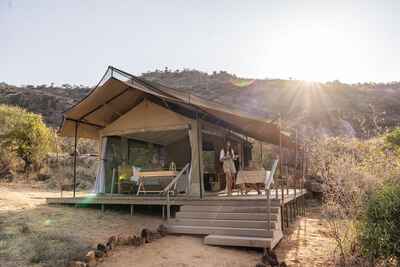About Basecamp Samburu
The newest addition to Saruni Basecamp’s portfolio, Basecamp Samburu is a small tented camp located in the ...
... community-managed Kalama Conservancy. Bordered by the semi-arid Samburu National Reserve to the south and the rugged terrain of the Matthews Mountain Range to the north, the camp features just five tents, consisting of four standard tents and one family tent, offering an intimate, personalised safari experience.
Accommodation
5 tents
Children
Open
All year
Activities

4WD Safari

Birdwatching

Cultural excursion

Guided walking safari

Night drive

Private activities

Sleeping under the stars
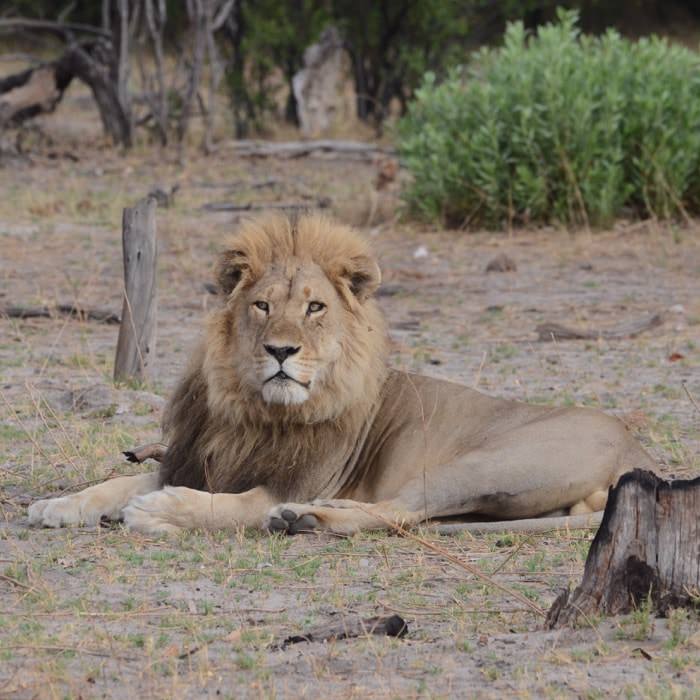
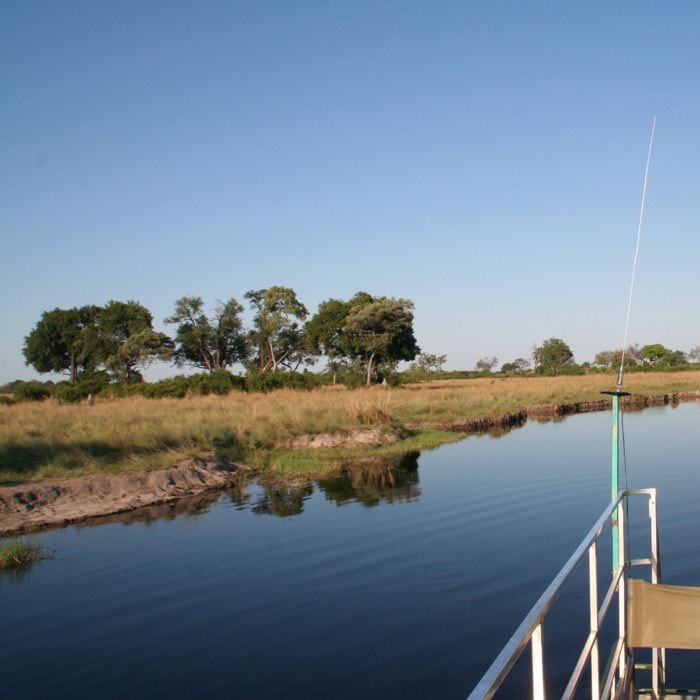
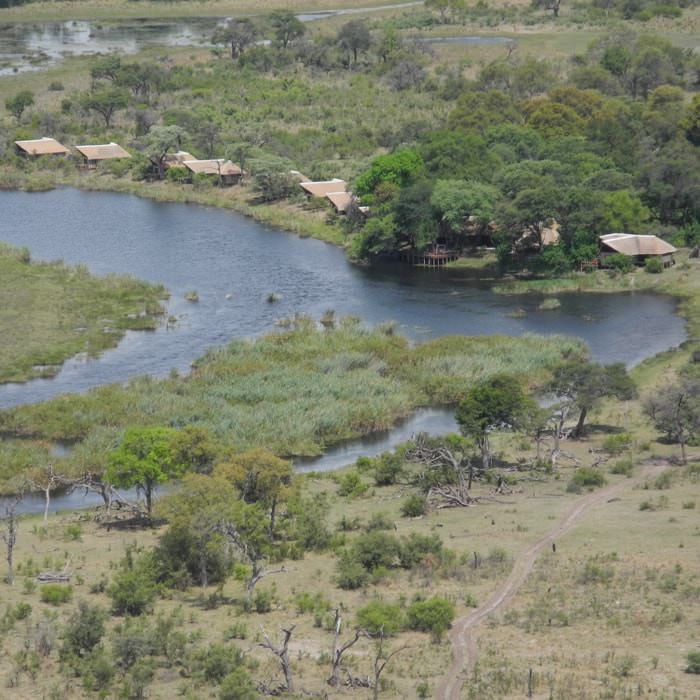
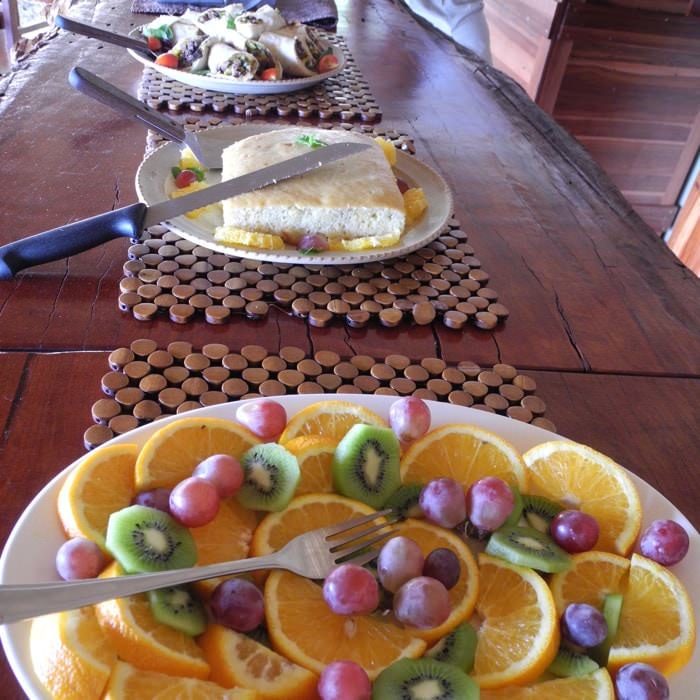
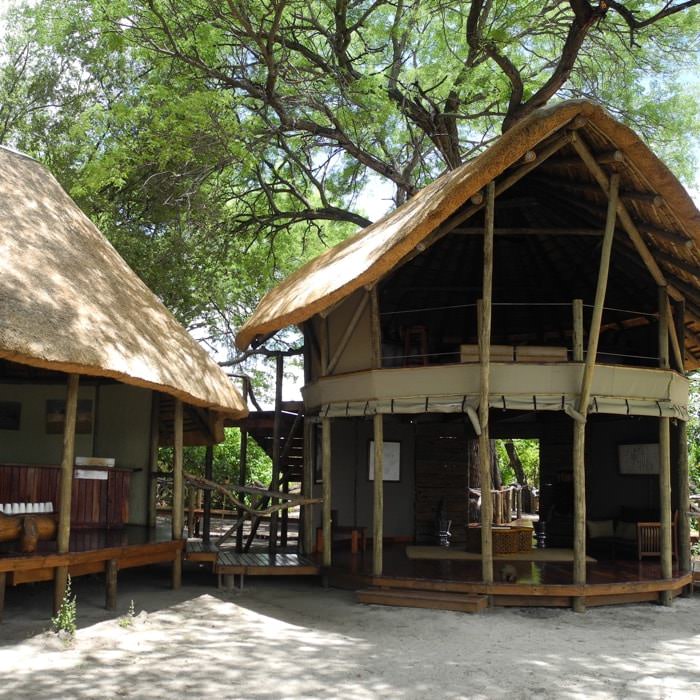
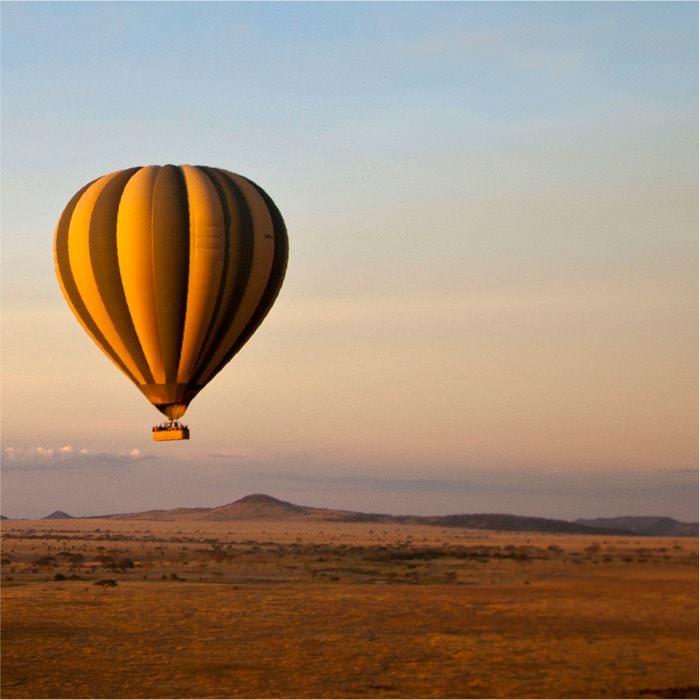
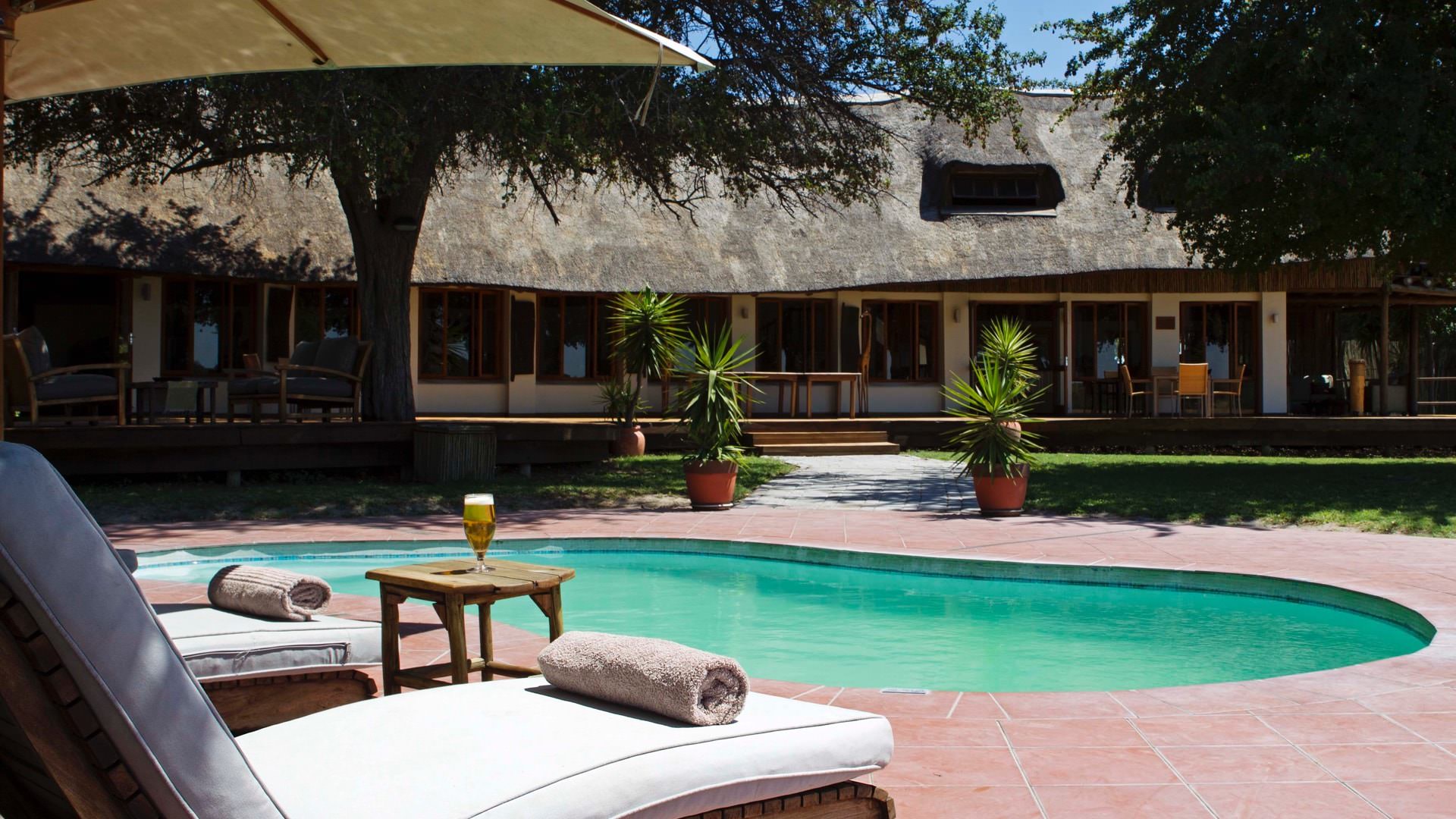
Expert Africa's gallery
When we travel we take lots of photos ourselves to give you a real and un-edited view of the safaris. See our 0 pictures of Basecamp Samburu to get the candid view.
View galleryBasecamp Samburu: Our full report
The newest addition to Saruni Basecamp’s portfolio, Basecamp Samburu is a small tented camp located in the ...
... community-managed Kalama Conservancy. Bordered by the semi-arid Samburu National Reserve to the south and the rugged terrain of the Matthews Mountain Range to the north, the camp features just five tents, consisting of four standard tents and one family tent, offering an intimate, personalised safari experience.
Basecamp Samburu joins the Saruni Basecamp portfolio as a sister property of Saruni Samburu and Eagle View, respectively located in Samburu and the Maasai Mara’s Naboisho Conservancy.
The four standard tents are simply designed and set on an elevated platform. They feature double or twin beds, a private ensuite bathroom with hot water showers, and private terraces that offer moments of calm before expansive views.
The family tent mirrors the design of the standard tents, featuring two double or twin bedrooms connected by a central lounge and shaded by an overhead pergola. Bright rugs adorn the wooden flooring, bringing a splash of colour to the neutral-toned décor.
In keeping with the rest of the camp, the communal area extends along a long-raised platform with a lounge area that has sofas, coffee tables, and chairs at one end, and a dining room at the other. Each of the canvas sides can be opened to allow a 360-degree view of the surrounding landscape and director’s chairs are spread along the outdoor decking where you can enjoy a morning coffee or evening night cap beneath the vast Samburu sky.
Unique to the Saruni Basecamp portfolio, Basecamp Samburu also has two elevated star beds. Both feature private dining as standard, with jacuzzis for added luxury. They have a full bathroom and are cleverly designed so as to offer views over the surrounding landscapes while still maintaining privacy for those enjoying a romantic night beneath the stars.
Activities at Basecamp Samburu focus primarily on game drives, where you can enjoy morning, afternoon or all-day excursions through the surrounding wildernesses of both the Kalama Conservancy and Samburu National Reserve. A unique activity not permitted in the National Reserve; you can also set out to discover nocturnal animals during night drives in the Kalama Conservancy, or take part in a star gazing activity where, equipped with torches, you set out with knowledgeable Samburu guides to learn about the celestial displays and constellations.
Walking safaris are also available at Basecamp Samburu and will be adapted to your individual preferences, taking place alongside local Samburu warriors. These informative walks place emphasis on the authentic local knowledge of the Samburu guides, who share insights on the plants, animals, and landscapes as well as their own traditions and lives.
Similarly to its sister properties, a stay at Basecamp Samburu focuses as much on the culture and local communities as it does the surrounding wildlife. They offer village visits which provide an authentic glimpse into the Samburu way of life.
**This experience incurs an additional charge that goes directly to the community.
Other activities at Basecamp Samburu include their Scorpion safaris (a chance to learn more about the different scorpion types that call Samburu home); their Warrior Academy (a special interactive safari experience designed for smaller groups or families with children that can last between 1-3 days, and must be booked in advance); and visits to the Reteti Elephant Sanctuary, which is around two hours north by road.
The Reteti Elephant Sanctuary is located within the neighbouring Namunyak Wildlife Conservancy and is the first community-owned and managed elephant sanctuary in Africa. Similarly to Nairobi’s David Sheldrick Elephant Sanctuary, Reteti cares for orphaned and abandoned elephant calves with the aim of releasing them alongside wild herds once they are fully recovered. A visit to the sanctuary must be arranged in advance, at the time of booking your safari. Please speak to your Expert Africa safari specialist to explore including this within your itinerary.
Activities
4WD Safari
Birdwatching
Cultural excursion
Guided walking safari
Night drive
Private activities
Sleeping under the stars
Families & children
- Attitude towards children
- Children of all ages are welcome to Basecamp Samburu.
- Property’s age restrictions
- There is no minimum age restriction at Basecamp Samburu.
- Special activities & services
- Basecamp Samburu can arrange for special children’s meals, and the guides can assist with unique activities such as bush craft, beading lessons, tracking, baking in the kitchen alongside the chef, and more.
- Generally recommended for children
- Children of all ages are welcome to Basecamp Samburu.
- Notes
- Children would need to be supervised at all times at Basecamp Samburu.
Food & drink
- Usual board basis
- Full Board & Activities
- Food quality
- Thanks to the quality of food at its sister camps, we expect dining at Basecamp Samburu to be very good and, no doubt, to also incorporate a nod to the owner’s Italian heritage.
Basecamp Samburu offers communal dining, inviting you to connect with other guests during shared conversations over a meal and drink before moving to the central firepit, where you might like to swap stories of the day in front of a crackling fire. - Dining style
- Group Meals
- Dining locations
- Indoor and Outdoor Dining
- Drinks included
- Soft drinks, house wines, selected beers and house spirits are included. Premium spirits, wines/Champagnes and beers are extra cost.
Getting there
- Location
- Samburu National Reserve, Kenya
- Ideal length of stay
- 3-4 nights would be ideal.
- Directions
- Basecamp Samburu is located 14km, or a 25-minute drive, from Kalama Airstrip.
- Accessible by
- Fly-and-Transfer
Special interests
- Family safaris
- The family tent offers privacy whilst allowing connectedness, and a Young Explorers Club is available for younger travellers. Children under 5 stay free of charge when sharing with parents/adults and child-friendly meals are available.
- See ideas for Family safaris in Kenya
- Birdwatching safaris
- Part of the greater Samburu ecosystem, some 350 bird species might be found in Kalama, including impressive raptors, vultures, and both the Somali and common ostrich. Wake to the Samburu dawn chorus and enjoy your day, equipped with binoculars.
- See ideas for Birdwatching safaris in Kenya
- Cultural Experiences
- Basecamp Samburu offers the Warrior Academy, an interactive experience with a strong educational focus. Cultural village visits are also possible which, thanks to strong ties with the local communities, we expect to be authentic.
- See ideas for Cultural Experiences in Kenya
- Walking safaris
- Walking safaris vary from 2-4 hours in length, moving through Kalama Conservancy at a leisurely pace to explore the open plains and bush. Guests are accompanied by Basecamp Samburu guides and an armed county ranger trained by KWS.
- See ideas for Walking safaris in Kenya
- Wildlife safaris
- In addition to big cats, elephants and (if you are lucky) wild dogs, visitors to Samburu will have the chance to sight the ‘Northern Five’. These include the Grevy’s zebra, reticulated giraffe, Beisa oryx, Somali ostrich, and gerenuk.
- See ideas for Wildlife safaris in Kenya
Communications
- Communications
- Complementary Wi-Fi is available.
Health & safety
- Malarial protection recommended
- Yes
- Medical care
- There is a dispensary and doctor at Archers Post, which is about a 30-minute drive away from Basecamp Samburu. For minor injuries there is first-aid equipment at the lodge and in the vehicles, and certain team members are trained in basic first aid.
For more serious incidents Basecamp Samburu has links to a flying doctors service. - Dangerous animals
- High Risk
- Fire safety
Useful info
- Disabled access
- On Request
Plan and book your trip with Expert Africa
All of our trips are tailor-made, so we'll always adapt them to suit you. Talk to an Expert and let us plan and arrange your perfect trip.

Talk to an Expert
Call or email us now! We’ll match you with the Specialist in our team who is best suited to help you. Then together we can start planning your trip.

Set up your itinerary
Based on our experience and your ideas, your specialist will create a detailed, costed itinerary. We’ll refine it together, until we have a trip that you’re perfectly happy with.

Prepare for your trip
The same Specialist will make the seamless arrangements for your trip, send you detailed travel documents, and be available to answer any questions before you depart.

Travel with peace of mind
After you set off, you’ll be cared for by our partners in Africa, most of whom have worked with Expert Africa for decades. And if you ever need us urgently, we’re available 24/7.

When you return
We love to learn about your trip, and so will always be grateful if you’ve the time to give feedback to your Specialist when you return.
Basecamp Samburu's location
Look closer at the environment and surroundings of Basecamp Samburu.
Other lodges in Samburu National Reserve
Alternative places to stay in this same area.
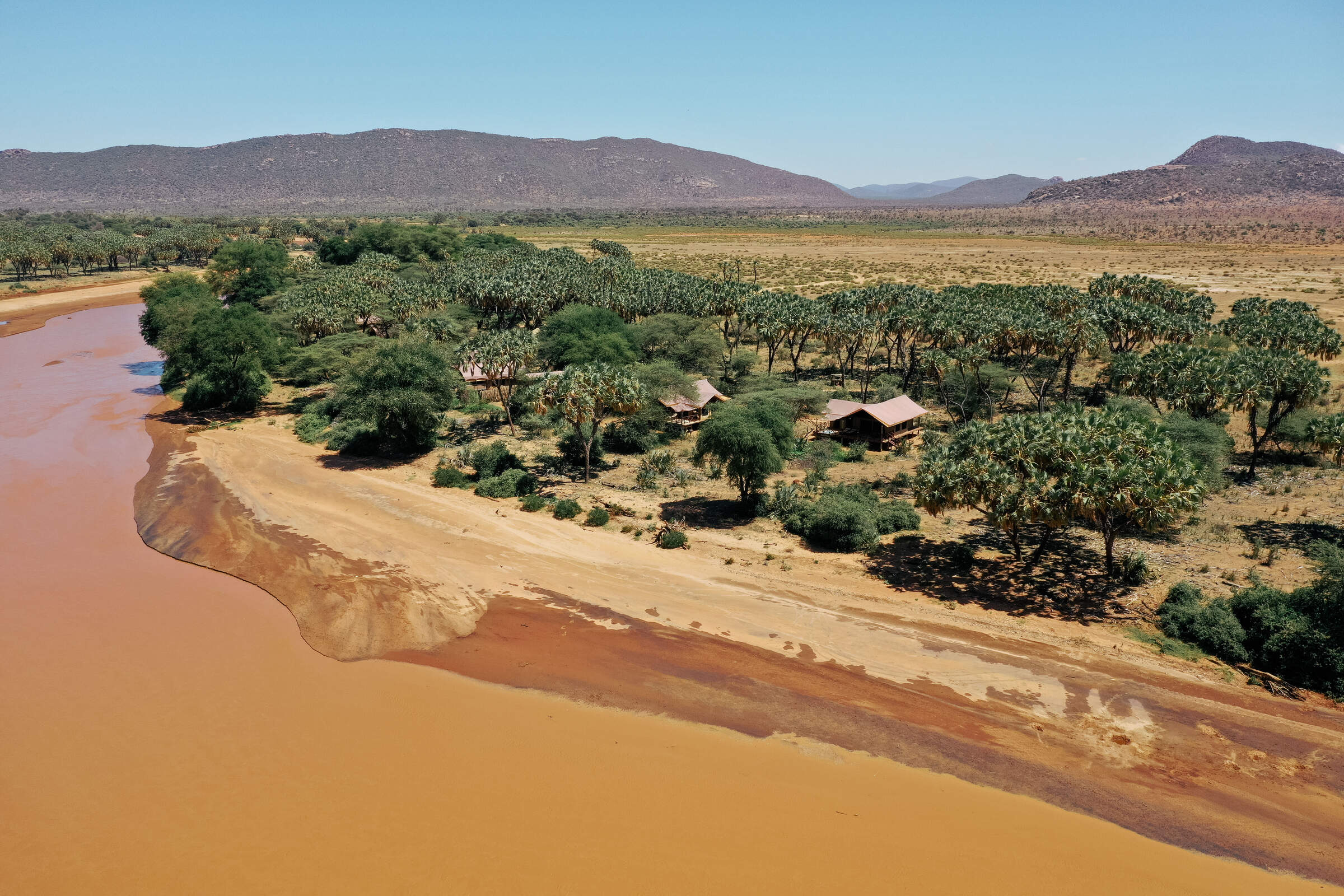
Elephant Bedroom
Elephant Bedroom is a smart tented camp in the heart of the Samburu National Reserve, offering a good degree of comfort without divorcing you from the beautiful natural environment.
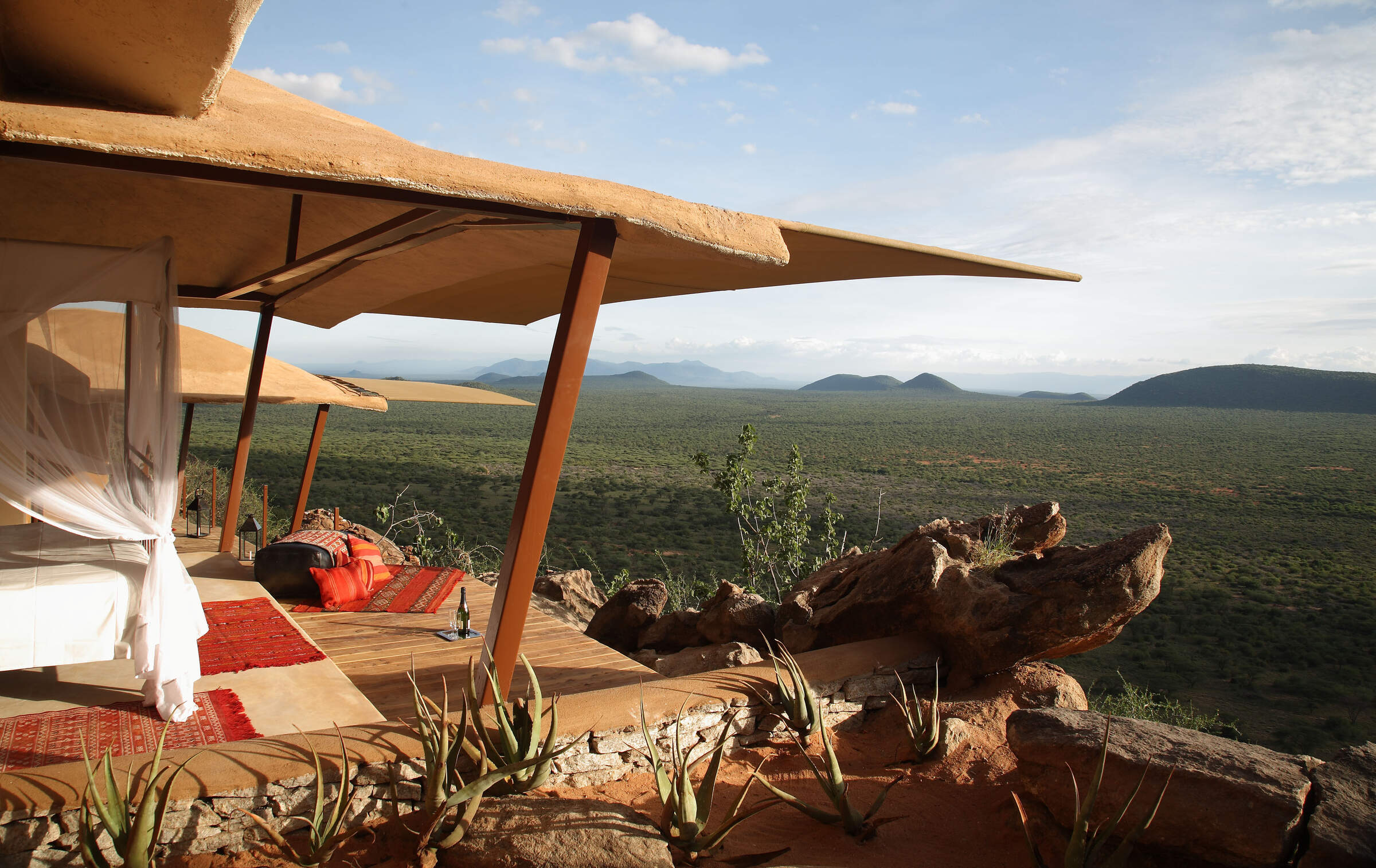
Saruni Samburu
Saruni Samburu is a top-quality boutique lodge, with one of the most breathtaking locations in Kenya overlooking its own private conservancy.
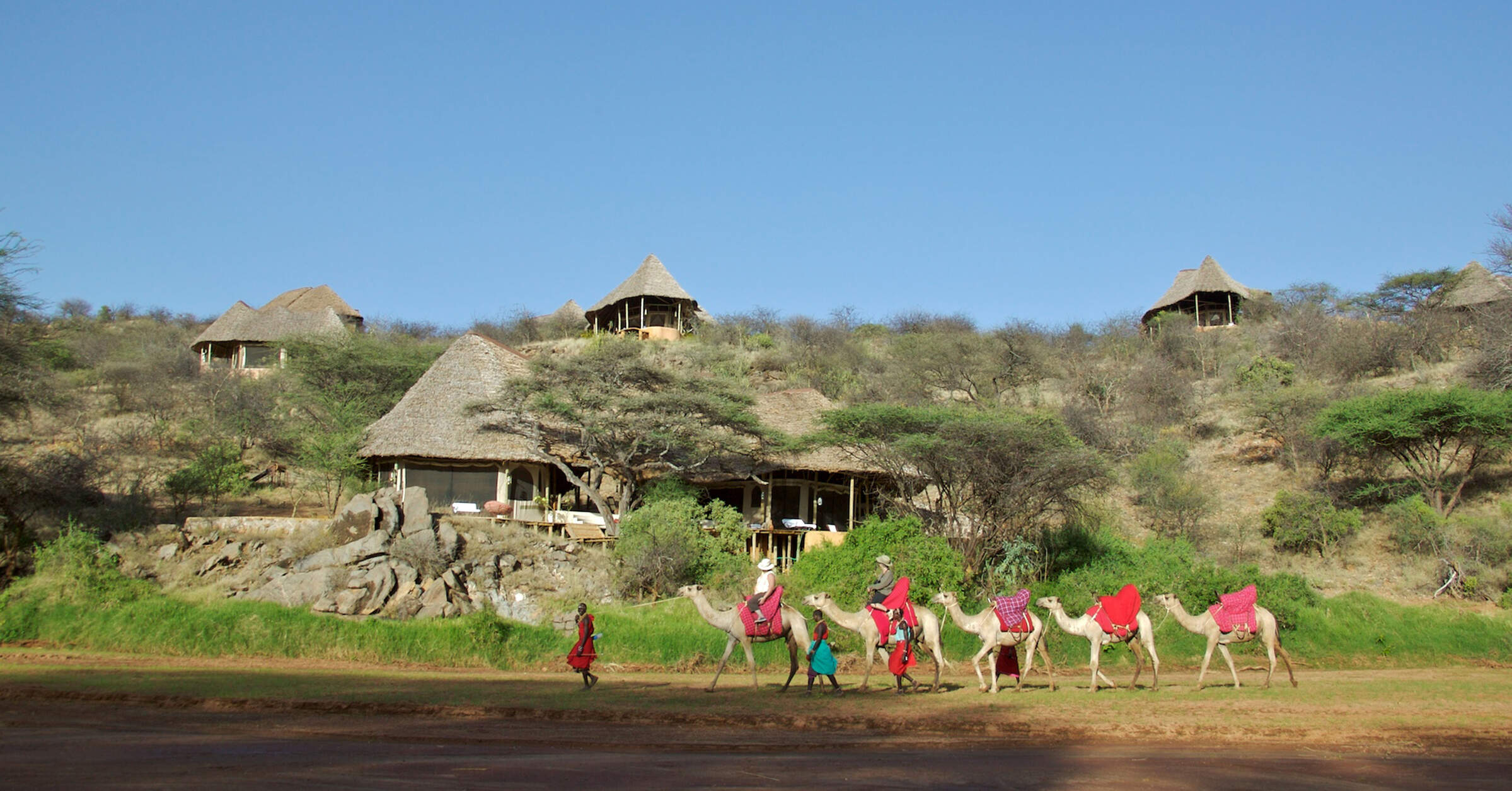
Sasaab
Stylish and luxurious Sasaab has nine rooms with stunning views across the Ewaso Nyiro River to the plains beyond.
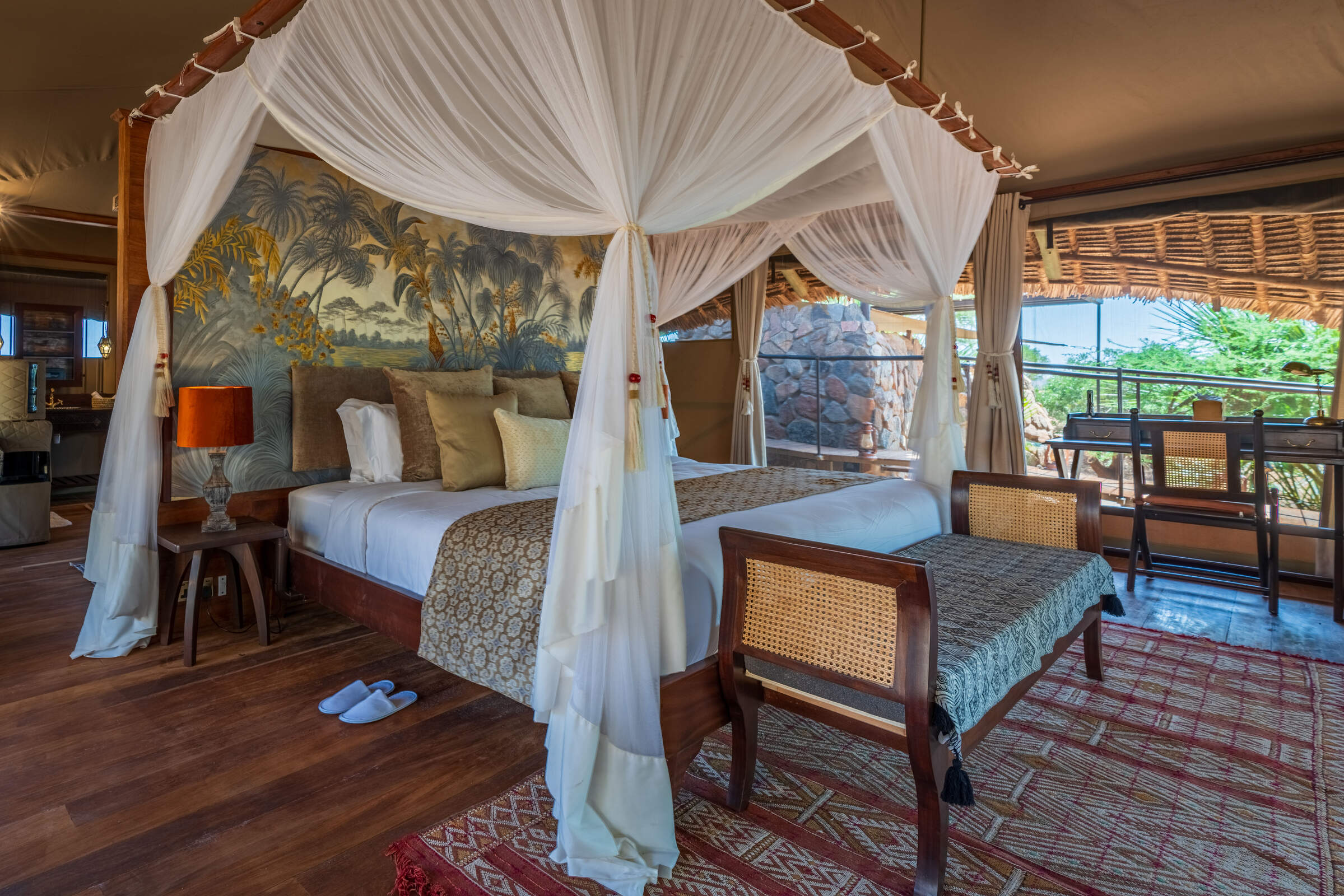
Larsens Tented Camp
Larsen’s Tented Camp is a relaxed and welcoming camp, with 20 sturdy tented rooms, a good pool and a very engaging team of staff.
When to go to Samburu National Reserve
Our month by month guide: What it's like to visit Basecamp Samburu in Samburu National Reserve
Jan
Feb
Mar
Apr
May
Jun
Jul
Aug
Sep
Oct
Nov
Dec
Kenya in January
Clear, hot days and warm nights make this high season a popular time for safaris and it’s also good for diving and snorkelling as water clarity is excellent and gets better as the dry season progresses. Most lodges and tented camps treat January after the New Year week is over, as mid-season, making it a good compromise in terms of value for money with reasonably reliable, dry weather and some greenery left in the landscape.
Expert Africa bases its description of climate and weather in January, like the other months of the year, on the climate records of roughly the last 100 years, and it's fair to say that the weather and seasons since the beginning of this century have been highly irregular and unpredictable.
- On average, January is the second driest month of the year
- Elephants dig waterholes in the dry riverbed in the Samburu reserve.
- Wildebeest and many antelope have their calving season, to February.
- Migrant birds are seen in huge numbers, especially in the Rift Valley.
- Sea water clarity around the coral reefs generally good.
Our view
Fantastic: the very best time to visit
Weather in January
Kenya in February
With the short dry season well established, the grass grazed down and wildlife gathering close to water points, this is still a good time for a safari. Good water clarity in the Indian Ocean's coastal waters makes for excellent diving and snorkelling conditions.
Expert Africa bases its description of climate and weather in February, like the other months of the year, on the climate records of roughly the last 100 years, and it's fair to say that the weather and seasons since the beginning of this century have been highly irregular and unpredictable.
- On average, February is the driest month of the year.
- It’s sometimes possible to swim with whale sharks at Diani Beach.
- Migrant birds are still seen everywhere, especially near water.
- This is usually peak calving season for wildebeest and many antelopes.
- This month is often the hottest of the year, especially on the coast.
Our view
A very good time to visit
Weather in February
Kenya in March
Hot, increasingly humid weather – with good diving and snorkelling conditions at the start of the month – gives way to rains and lower accommodation costs. Expert Africa bases its description of climate and weather in March, like the other months of the year, on the climate records of roughly the last 100 years, and predicting the seasons since the beginning of this century has been difficult.
March is the month when – traditionally – intensely hot conditions build up until a cloudburst finally happens at the end of the month or in early April, to relieve the humidity. As ever, regional variations across the country can greatly impact on visitors' experiences.
- Sea-water clarity is best for diving before the long rains start.
- Visitor numbers are low, though the Easter holidays can be busier.
- Night skies can be scintillatingly clear in early March.
- Cropped down savannah grasses can make it easier to see the wildlife.
- Temperartures climb high, especially at lower elevations.
Our view
A good time to visit, with pros & cons
Weather in March
Kenya in April
April sees the full onset of the southeast monsoon wind or kusi, which heralds the long rains. Temperatures drop soon after the rains are established and you’ll often have facilities largely to yourself in this more affordable low season, sometimes known as the "green season". The bush quickly springs to life, with greenery sprouting almost before your eyes. While you're likely to get a fair number of heavy showers, the breaks in the rain can yield sparklingly clear conditions.
With the dust settled and bright sun piercing the clouds, conditions can be sublime for photography, especially first thing in the morning or in the late afternoon with another storm brewing. You may be lucky, or you may find conditions very wet and muddy.
- A wet month, the coast often gets more than 300mm (12in) of rain.
- Sunny spells can provide great light for photography.
- Buffalo and zebra calving season often happens in this month.
- Baby crocodiles hatch, for example on Central Island in Lake Turkana.
- Palearctic migrant birds gather to fly north to breeding grounds.
Our view
A time to avoid if possible
Weather in April
Kenya in May
While game viewing can be trickier as vegetation runs riot, between the cloudbursts the colours and light are great for photography at this time of year. Expert Africa bases its description of climate and weather in May, like the other months of the year, on the climate records of roughly the last 100 years, and while it's reasonable to expect heavy rains in many parts during this month, especially on the coast, the rains don't always come evenly or in some areas come at all.
In an El Niño year, the so-called long rains that normally are established across much of the country by May can be meagre, to the despair of farmers. On the other hand in a La Niña year, the long rains can bring floods. On the coast, the monsoon winds make the climate much more predictable, with heavy rains common throughout this month.
- Frogs breed in the ponds in the Arabuko Sokoke Forest near Watamu.
- Wildebeest, impala and other grazers are in rut (the breeding season).
- Kilimanjaro looks its best as heavy rain falls as snow on the summit.
- There's a sharp peek of rainfall on the coast with many rainy days.
- Accommodation prices are uniformly low, while some camps close.
Our view
A time to avoid if possible
Weather in May
Kenya in June
The rains give way to cloudy, cooler weather, often making for comfortable conditions by the end of the month, especially in the highlands. Starting from mid-June or the beginning of July and running until the end of October, this is the high season, and accordingly has higher accommodation rates and – at least until early September – higher numbers of visitors.
While the early part of June can often be rainy on the coast, it can be a great time to go on safari, with fresh greenery, many young animals and good photographic conditions with clear air.
- The Taru Desert, inland from the coast, is carpeted with flowers.
- The Lake Turkana Cultural Festival is held in Loiyangalani.
- Madaraka Day (commemorating self rule) is 1 June.
- The annual Lewa marathon runs a course through the wildlife.
- The Diani Rules "sports" event rips up the rulebook at Diani Beach.
Our view
A good time to visit, with pros & cons
Weather in June
Kenya in July
Kenya’s “winter" season sets in (winter is a misnomer but locals feel the change), and the highlands can be rather grey. Skies are often cloudy and the days can be surprisingly cool, with an average daytime high in many highland safari areas of 15-20°C and night-time temperatures dropping below 10°C in Nairobi and the highlands. Lower parts of the country and the coast are usually warm and dry, typically reaching highs of around 25°C with lows in the high teens.
As this is the start of the high season, coinciding with the usual arrival of the wildebeest migration in the Maasai Mara, July is a busy month. Ask your Expert Africa specialist to advise on how to avoid the crowds, which is not that difficult to do.
- The wildebeest migration usually reaches the Maasai Mara in July.
- Simbi Lake (Kisumu) and Crater Lake (Naivasha) can attract flamingoes.
- Watersports start to pick up and some surfing is possible at Malindi.
- Afternoon thunderstorms are a common feature in the Maasai Mara.
- The sea can be choppy along the coast, making diving difficult.
Our view
A good time to visit, with pros & cons
Weather in July
Kenya in August
The Great Migration fills the plains of the Maasai Mara, and school’s out, so the park roads are full of tourists – ask your Expert Africa specialist for advice on crowd avoidance tactics. Choose a private conservancy rather than a public national park or national reserve for quieter conditions.
Like July, August is generally mild and relatively dry in the safari areas, but it can be very chilly in the highlands, even in the middle of the day, and hail occasionally falls above altitudes of around 2,400m (8,000ft). Nairobi can be disappointingly overcast, with low cloud.
- Apart from Christmas holidays, this is the busiest month of the year.
- Late August sees peak wildebeest drama at the Mara River crossings.
- Coastal winds are good for kite- and wind-surfing.
- Few mosquitoes are around at this generally dry time of year.
- The annual Camel Derby takes place in the Samburu capital, Maralal.
Our view
A good time to visit, with pros & cons
Weather in August
Kenya in September
The skies clearing of cloud signals the start of hot, dry weather with little chance of rain – and, after the first few days of the month, far fewer visitors – making the latter part of September a good time for a quieter safari. While early September is often good for dramatic migration crossings along the Mara River, you might consider deliberately postponing your trip until later in the month, when the migration can still be very impressive and visitor numbers fewer.
If tourist surges are somewhat predictable, however, the patterns of the wildebeest migration are more volatile, and like all of Expert Africa's climate and weather assessments, they are based on accumulated years of experience rather than guaranteed certainty.
- This is still high season, with prices to match.
- Many river crossings take place on the Mara river in both directions.
- Natural bush fires flush out insects and small animals for predators.
- The Rift Valley Music Festival takes place by Lake Naivasha.
- With school holidays over by early September, late-month is quieter.
Our view
Fantastic: the very best time to visit
Weather in September
Kenya in October
Still hot, mostly dry and not too busy, this is many people’s preferred month for a safari, and it’s also good for diving and snorkelling. The wildebeest and zebra herds of the great migration are often still to be seen, though in dwindling numbers. The swamps of Amboseli attract thirsty wildlife including large herds of elephants.
While we wouldn't expect much rain across most of the country this month, the climate has become so unpredictable that you can never say never, and the possibiity of the short rains – usually associated with November to mid-December, starting early, can't be discounted.
- This month sees the tail end of the great migration in the Mara.
- Palearctic migrant birds start to arrive, staying until March.
- Turtle nests hatch at Watamu, until November.
- Amboseli elephants focus on the swamps for their daily water.
- The Indian Ocean monsoon winds turn from southeast to northeast.
Our view
A very good time to visit
Weather in October
Kenya in November
The northeast monsoon wind or kaskazi heralds the start of the “short rains", usually some time in the second half of the month. From November to mid-December, this is the low season, and accordingly has lower accommodation rates and lower visitor numbers. Across most of the country you can expect warm, somewhat cloudy weather, with occasional heavy showers and localised flooding.
Expert Africa bases its description of the climate in November, like the other months of the year, on the records of roughly the last 100 years, and it's fair to say that the seasons since the beginning of this century have been highly irregular and unpredictable: some years the short rains don't come at all, or don't reach every part of the country. In an El Niño year, the November short rains can be very heavy, but in a La Niña year, they can fail completely.
- Swimming with dolphins in Lamu can be done from now until April.
- Birders gather at Ngulia in Tsavo West to ring Palearctic migrants.
- The Lamu Cultural Festival takes over the town and Lamu Creek.
- Agricultural shows often take place regional market towns.
- This is low season, so camps can be great value, with special offers.
Our view
A good time to visit, with pros & cons
Weather in November
Kenya in December
In a typical December, the rains usually finish by middle of the month, leaving the landscape looking its best, under clear blue skies, and heralding the start of the second peak tourist season from around 20 December to the first week of January. Our assessment of the likely weather in December, like the other months of the year, is based on climate records, and it's fair to say that the seasons since the beginning of this century have been highly irregular and unpredictable.
Christmas can sometimes be wet, but most years the rains have finished a week or two earlier, with the festive season ushering in the perfect combination of clear skies and sunshine by day and starry nights.
- Christmas and New Year are busy, with the lodges and camps full.
- Rates are highest after 24 Dec, with supplements on public holidays.
- Republic Day and Independence day are celebrated on 12 December.
- Good kite- and wind-surfing restarts, with strong northeasterly winds.
- Mango season begins, providing excitement for primates and elephants.
Our view
A good time to visit, with pros & cons
Weather in December

Looking for inspiration on where to travel next?
Visit our trip chooser to explore your options and find inspiration for your perfect African adventure
Inspire me